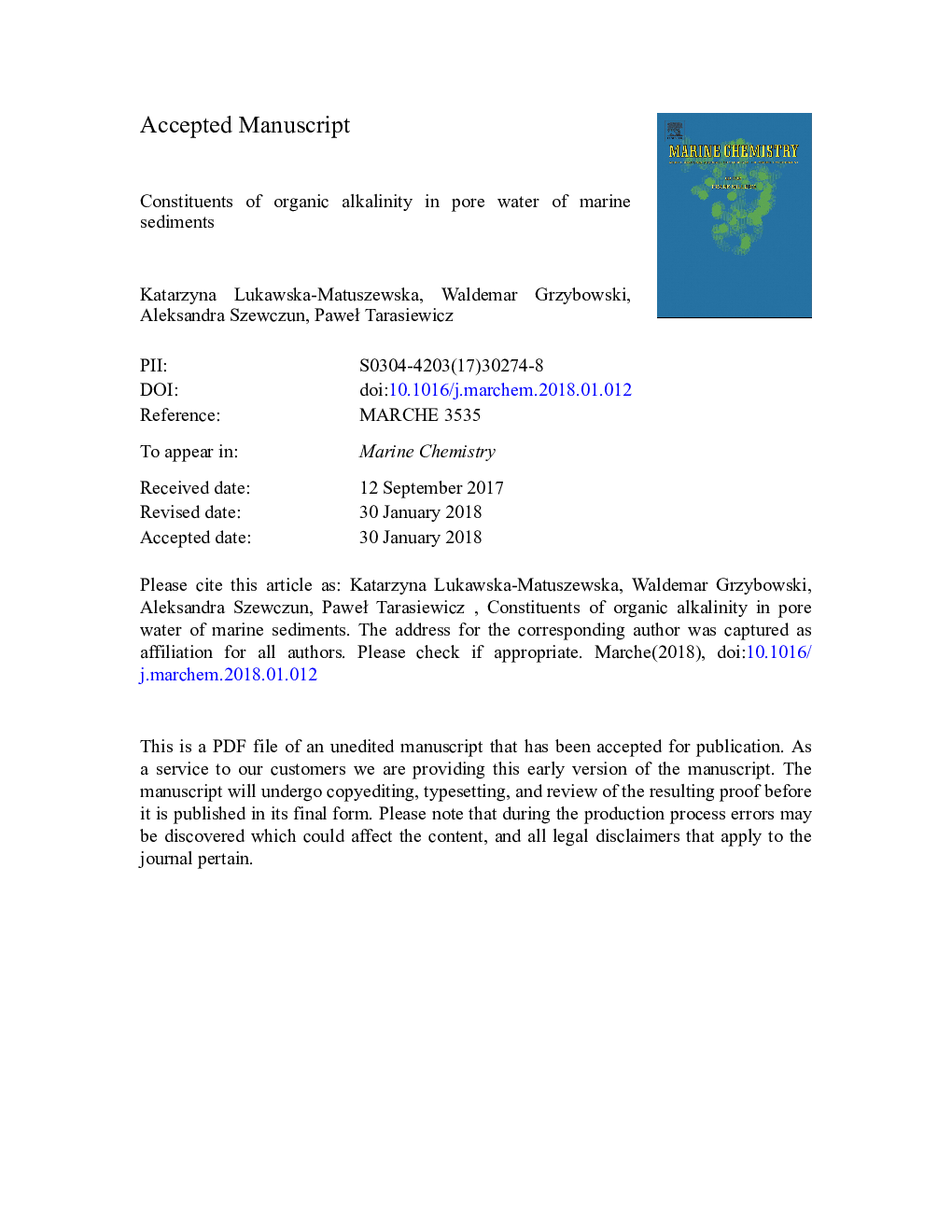| Article ID | Journal | Published Year | Pages | File Type |
|---|---|---|---|---|
| 7698863 | Marine Chemistry | 2018 | 36 Pages |
Abstract
In this study we investigated the components of organic alkalinity (AO) in pore water from marine sediments. We used absorbance and fluorescence of pore water to characterize dissolved organic matter (DOM), the source of AO. Research material was collected during growing season (September 2016) from two sites located in the eutrophic Gulf of GdaÅsk (southern Baltic). Concentration of AO ranged from 104 to 1505â¯Î¼molâ¯lâ1 and increased with sediment depth. Our results demonstrate a clear link between AO and composition of DOM in pore water. Measurements of pore water fluorescence showed that the main source of AO is humic substances. The protein-like fluorescence, pointing to presence of freshly produced organic substances, was clearly visible in the upper layers and diminished with depth. There are changes in absorbance spectra with depth indicating decrease of molecular weight of DOM. In anoxic sediments the concentration of AO was close to the alkalinity from nonâcarbonate inorganic bases (N-CIBs) and did not exceed 8% of total alkalinity (AT). In the sediments where organic matter was mineralized with the use of substances preceding sulfate in the sequence of oxidants (i.e. oxygen, nitrate, Mn, Fe), DOM was the source of up to 17% of AT. The results from this study indicate that DOM has a large effect on acid neutralizing capacity of pore water of marine sediments. We suggest the production of AO in sediment and its benthic efflux should be taken into account in modeling acid-base system in shelf seas.
Keywords
Related Topics
Physical Sciences and Engineering
Chemistry
Chemistry (General)
Authors
Katarzyna Lukawska-Matuszewska, Waldemar Grzybowski, Aleksandra Szewczun, PaweÅ Tarasiewicz,
